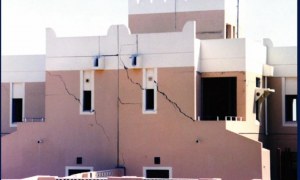🕑 Reading time: 1 minute
Electro-osmotic consolidation, which was studied and applied by Casagrande for the first time, is an attractive soil improvement technique for soft clay. In this technique, the saturated fine grain soil is consolidated by the application of electric current. Electro-osmotic consolidation can be an effective and viable technique to drain, consolidate, and strengthen saturated fine grain soil.
As the water is drained out, a negative pore-water pressure is generated which introduces the consolidation process in the soil. The consolidation process can go up to a hundred times faster than mechanical consolidation. That is why substantial improvement in the soil's shear strength is achieved quickly. The thickness of improved soil ranges between 4m to 10m.
Moreover, one of the outstanding features of this method is its low impact on the environment in comparison with other soil improvement techniques. Comparatively, carbon footprint and cost of the
Furthermore, electro-osmotic consolidation has been utilized in various engineering applications, for instance: excavations, slope stabilizations, controlling groundwater flow, improving pile capacity, and strength of clay.
Lastly, there
Contents:
Electro-Osmotic Consolidation of Soil
Electro-osmotic consolidation involves the application of small electric potential across the soil layers. This would generate a negative pore-water pressure, and consequently, the flow of pore-water starts from the anode to cathode.
So, water moves from anode to cathode where it can be collected and pumped out of the soil. Practically, steel pipes have been installed and used as Anode and perforated pipes as Cathode.
As a result, the soil is consolidated and the strength properties are improved. It is found that the improvement of soil properties is permanent. Electro-osmotic flow depends on the nature of the soil, water content, pH and on ionic type concentration in the pore-water. Due to the applied electric potential, the electrolysis of water occurs at the electrodes.
2H2O -> O2 (g) + 4H+ +4e- oxidation (anode)
4H2O + 4e- -> 2H2 (g) + 4OH- reduction (cathode)
The clay particles have a negative charge. These negative charges produce an electrostatic surface property known as the double layer which creates a net abundance of cations in the pore-space.
Electro-osmotic transfer of water through clay is a result of diffuse double layer cations in the clay-pores being attracted to a negatively charged electrode or cathode.

When electrodes are placed across a saturated clay mass and direct current is applied, water in the clay-pore space is transported towards cathode by electro-osmosis.
In addition, frictional drag is created by the motion of ions as they move through the clay-pores helping to transport additional water. The flow generated by the electric gradient is called E

The power consumption varies depending on electrode material, installation pattern, treatment time and soil characteristics. In previous field applications, it has varied from 0.5 kWh/m3 to 230 kWh/m3. Risk of shock due to electrical current goes up to 50V, but the danger would be greater as the voltage goes higher.

Factors Influencing Electro-Osmotic Consolidation
- The coefficient of electro-osmotic permeability is a pivotal factor in the effectiveness of soil improvement. It controls the electro-osmotic flow.
- Zeta potential is the electric diffuse potential at the double layer.
- Salinity is the concentration of ions in the pore water.
Permeability of soil.- Water content, high water content improves the effectiveness of electro-osmotic consolidation.
- The activity of soil i.e. the ability of soil particles to interchange their attracting ions.

Application of Electro-Osmotic Consolidation
- Stabilization of slopes
- Excavations
- Embankments
- Controlling groundwater flow
- Increasing pile capacity
- Improving the
strength of clays - Dewatering tailings and sludge
- Improving soil after a landslide



